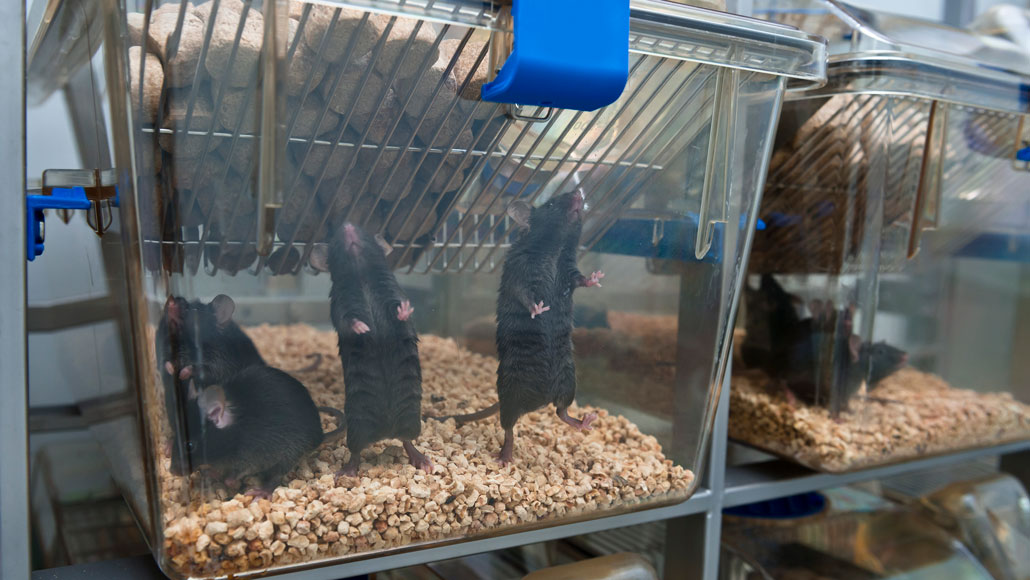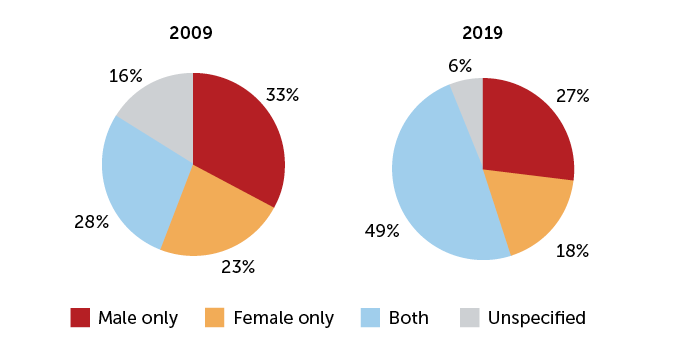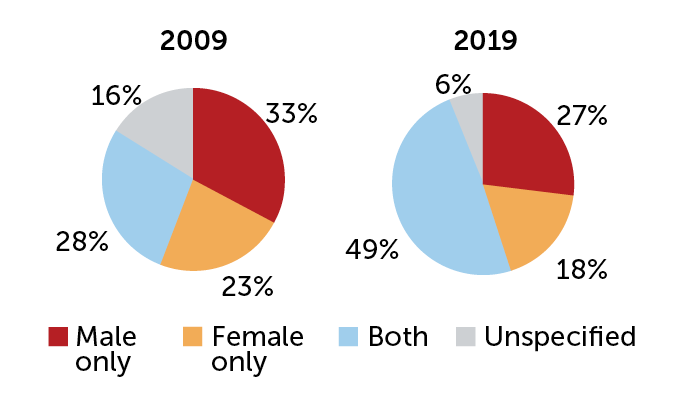Biomedical studies are including more female subjects (finally)
Almost half of these studies now include male and female subjects. Here’s why that matters

Stand up and be counted, lady mice. In 2009, only 28 percent of biomedical studies included both male and female subjects. In 2019, that number was nearly 49 percent.
unoL/iStock/Getty Images Plus
- More than 2 years ago
Biomedical science has historically been a male-dominated world — not just for the scientists, but also for their research subjects. Even most lab mice were male (SN: 6/18/19). But now, a new study shows that researchers are starting to include more females — from mice to humans — in their work.
In 2019, 49 percent of articles surveyed in biomedical science used both male and female subjects, almost twice as many as a decade before, according to findings published June 9 in eLife.
A study of articles published in 2009 across 10 biomedical disciplines showed a dismal picture. Only 28 percent of 841 research studies included both males and female subjects. The results were published in 2011 in Neuroscience and Biobehavioral Reviews.
The scientific world took note. In 2016, the U.S. National Institutes of Health instituted the Sex as a Biological Variable policy in an effort to correct the imbalance. Scientists had to use both males and females in NIH-funded research unless they could present a “strong justification” otherwise.
Annaliese Beery, a neuroscientist at Smith College in Northhampton, Mass., conducted the original study showing the extent of sex bias in research. In 2019, she and Nicole Woitowich, a chemist at Northwestern University in Evanston, Ill., wanted to see if sex bias was still as strong as it was in 2009.
Have things improved? After scanning another 720 articles across nine of the 10 original disciplines, the researchers have shown that yes, they have, with nearly half of all journal articles including both males and females. Behavioral research was the most inclusive, with both sexes in 81 percent of studies. Overall, six out of nine fields surveyed showed a significant increase in studies that included both sexes.
But it’s not all good news. Most studies that used only one sex offered no rationale for doing so. In addition, many of the studies that used both sexes did not state whether they had analyzed the results for sex differences.
Science News talked with Beery about her current findings, and the changes underway in biomedical science. The interview has been edited for length and clarity.
SN: Why is it important to study both males and females in biomedical research?
Beery: If you only study one sex, [you don’t know if] that information you learn applies to the other sex. But by studying both sexes, you can learn, is this shared? Is this uncommon? Is this one of the areas in which there isn’t a sex difference, or is there something different happening here between the sexes?
SN: Why weren’t people including females in their scientific studies a decade ago?
Beery: Researchers were making an active choice to exclude females from their studies. One rationale for this is that a lot of people assume that females are more variable than males [due to their hormone cycles]. There have now been several papers that have looked explicitly at that question and shown that no, females aren’t more variable than males.
Male bias also gets historically entrenched. If everyone in your field has studied males, and the body of knowledge that’s been built up has always used male-only subjects, then you might be inclined to continue studying male-only subjects…. I think that’s been part of perpetuating the male bias for a long time.
Sex of subjects in biomedical studies, 2009 and 2019
In 2009, only 28 percent of biomedical studies used both male and female subjects, while 33 percent were male-only and 23 percent were female-only. Another 16 percent of studies did not state which sex they used. In 2019, studies with both males and females jumped to 49 percent, male-only studies dropped to 27 percent, and female-only studies dropped to 18 percent. The studies that didn’t specify sex dropped the most, to only 6 percent of studies surveyed.


Source: N. Woitowich and A. Beery
SN: Were you surprised by the difference that took place over the last decade?
Beery: I was pleasantly surprised by the increase in female inclusion. I expected that it would be there, but it was substantial.
SN: On the downside, the studies frequently don’t analyze if there were differences between the sexes. Why?
Beery: I’m pretty stumped, honestly. I really can’t think of a good statistical argument to not include sex as a factor in your analysis. If it matters, it’s really important. And if it doesn’t matter, that seems like a really nice thing to be able to contribute to the literature.
SN: Why is it important to keep track of sex bias in preclinical research?
Beery: I think it’s important to know what we know. And I think that’s why the 2011 paper had the reception that it did. Everybody knew that there was a male bias in the field. To be able to say “this is how bad it is” can make an important contribution to both measuring whether it’s getting better and really understanding what the limits of our knowledge are.







